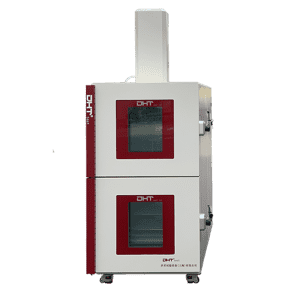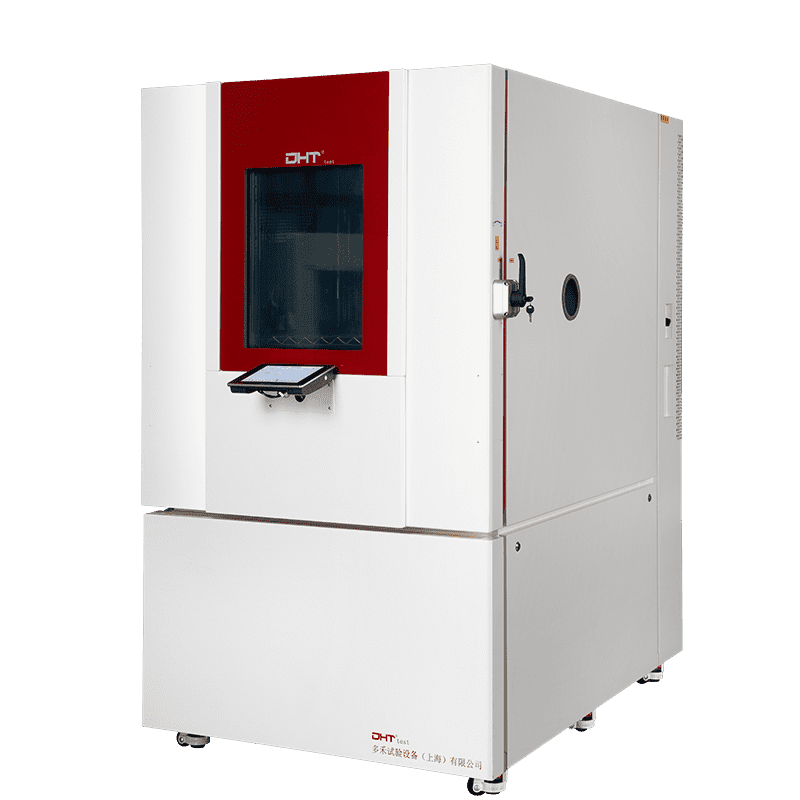Written by Robin
Senior Engineer, Doaho Test (DHT®)
Introduction|Test Failures Often Aren’t About Skill — But About Underestimating Complexity
In the development of electric vehicles, servers, avionics, and 5G communication systems, thermal shock testing is no longer optional — it’s a critical threshold for mass production validation.
Yet many engineers, even when strictly following procedures and using fully functional
thermal shock chambers, encounter frustrating results: data inconsistency, repeated cracking of samples, or results that can’t be reproduced.
Often, the issue isn’t in the operation — it’s that you’ve unknowingly stepped into some of the most overlooked pitfalls in thermal shock test chamber use.
Mistake 1|The Illusion of Thermal Equilibrium: Internal Gradients Are Often Missed
The essence of thermal shock testing lies in subjecting samples to rapid shifts between two extreme temperature zones (e.g., +150°C ↔ -40°C). Many labs assume that as long as the chamber temperature is stable, the test is valid.
But here’s the problem: a sample’s internal thermal inertia is much higher than the air inside the chamber. For dense electronic assemblies or battery modules, internal temperature lags cause uneven thermal stress buildup, leading to microcracks or solder joint failure — none of which will show up in chamber sensor readings.
How to avoid it:
-
Use thermocouples or thermal imaging to monitor temperature response at the core of the sample.
-
Create thermal balance calibration curves to guide transfer timing, rather than relying solely on chamber readings.
Mistake 2|Ignoring the Dynamic Interaction Between Airflow and Sample Thermal Load
Most thermal shock test chambers advertise transfer speeds under no-load conditions. But in real-world tests, the heat capacity and arrangement of the samples drastically alter heat exchange efficiency.
As a result, the set ramp rate may look good on paper — but the actual sample heating or cooling lags behind significantly.
How to avoid it:
-
Conduct before-and-after comparisons of unloaded vs. loaded conditions to fine-tune chamber parameters.
-
Optimize sample placement to prevent airflow short-circuiting or dead zones.
-
For high-mass samples, apply a pre-equilibrium strategy with delayed switching.
Mistake 3|Sensor Drift and Equipment Aging from Frequent Cycling
Thermal shock chambers cycle rapidly between extreme zones. Over time, this high-frequency stress on internal systems — refrigeration, heating, solenoids — causes:
-
Sensor drift in temperature control modules;
-
Frosting in the refrigerant system;
-
Seal degradation, causing air ingress and loss of temperature stability.
These “mechanical” issues can directly compromise the consistency of long-term testing results.
How to avoid it:
-
Set up a regular sensor calibration schedule;
-
Implement a maintenance routine with data tracking and logs;
-
Choose advanced chambers with auto-calibration and diagnostic features (like the DHT® intelligent series).
Mistake 4|Misapplying Standards and Test Conditions
Standards like IEC 60068, MIL-STD 883, and GB/T 2423.22 may seem similar — but they differ in temperature zones, transfer times, and recovery requirements.
Many teams apply test parameters from past experience or unrelated specs, resulting in tests that appear compliant but fail certification or client acceptance.
How to avoid it:
-
Align your testing with target export market certifications;
-
Involve test engineers early to deconstruct and adapt standard requirements;
-
Maintain a reference database of applicable standards, reducing reliance on outdated assumptions.
Conclusion|Thermal Shock Testing Is a Strategic Risk-Control Tool — Not Just a Procedure

Test failures don’t just ruin a dataset — they could mean entire product recalls, failed certifications, or lasting damage to brand reputation. In today’s faster development cycles and stricter compliance landscape, thermal shock testing is not just a gatekeeper — it should be an early-stage safeguard in your design process. By identifying these pitfalls before testing begins, you transform thermal shock from a “pass/fail checkpoint” into a proactive quality strategy that protects both your product and your brand.
At DHT®, this philosophy shapes every chamber we build. From thermal inertia compensation algorithms to dynamic airflow control and modular architectures that balance standardization with customization — we go beyond surface-level metrics to address the deeper logic and complexity of real-world test environments.
Let us help turn your thermal shock test chamber from a compliance tool into a strategic asset.
People also ask
Why do thermal shock test results often show inconsistencies even when procedures are followed?
Inconsistencies often stem from overlooked internal temperature gradients within the test samples. While chamber readings may appear stable, dense materials like batteries or PCBs may experience delayed thermal response, leading to uneven stress and microcracks. Using embedded thermocouples or thermal imaging and developing thermal balance calibration curves can help mitigate this issue.
How does sample placement affect thermal shock testing accuracy?
Improper sample placement can disrupt airflow and reduce heat exchange efficiency, especially in chambers under load. This leads to slower actual ramp rates and incomplete stress exposure. To improve accuracy, compare loaded and unloaded test data, avoid airflow dead zones, and adjust transfer timing for high-mass samples.
What are the most common maintenance issues in thermal shock chambers—and how can they be avoided?
Frequent cycling can cause sensor drift, refrigerant system frosting, and seal degradation, all of which reduce test repeatability. Preventive solutions include routine sensor calibration, logging maintenance data, and choosing chambers with self-diagnostic or auto-calibration systems, such as DHT®’s intelligent models.




